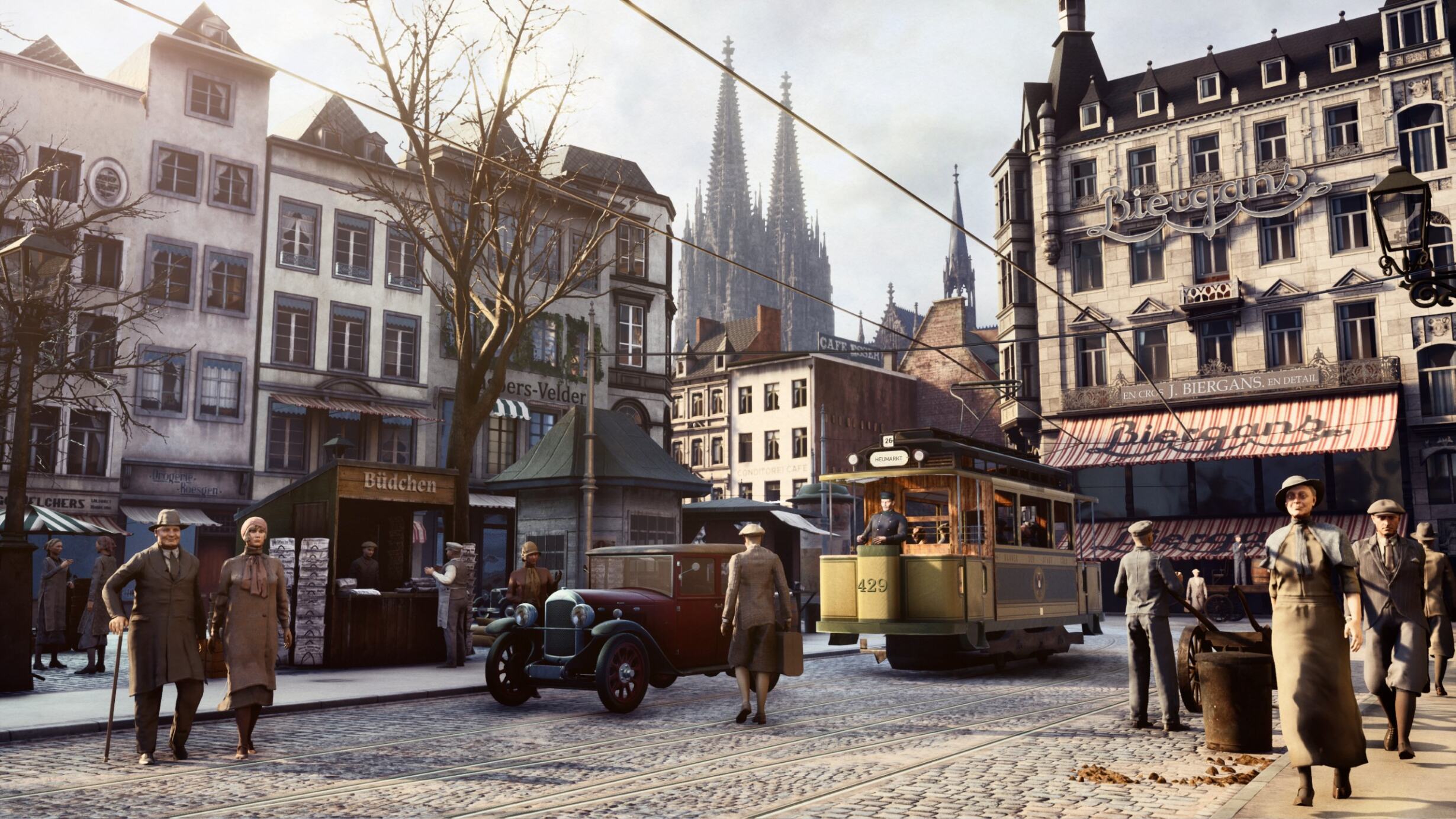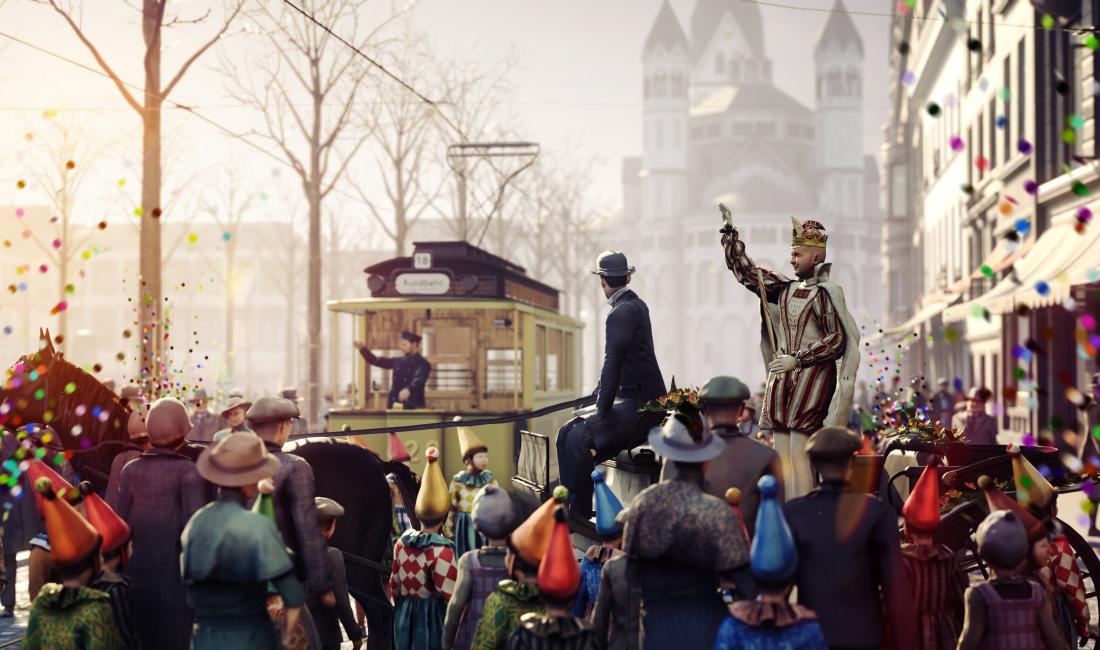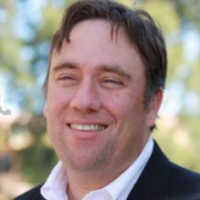... a City's Democratic Future.
I was more than a little startled when Konrad Adenauer approached me in the Old Market.
By JOE MATHEWS
I was more than a little startled when Konrad Adenauer approached me in the Old Market.
Sure, I was visiting Cologne, Germany, Adenauer’s hometown. But I had never imagined I’d lay eyes on the famous statesman who served as the German republic’s first post-war chancellor—much less get a wave from him.
Not least because he died six years before I was born.
But I had traveled back to 1926, when Adenauer was Cologne’s mayor, courtesy of TimeRide, a virtual reality tour.
I’m not much for tourist attractions, which TimeRide—which also operates in Dresden, Munich, Berlin, and Frankfurt—most certainly is. I took the tour, which involves entering a storefront on Cologne’s Old Market and sitting in a streetcar inside, after my colleagues at a Cologne-based democracy NGO suggested I try it. I’m glad I did.
Because TimeRide suggests possibilities not just for remembrance of difficult pasts, but also for how communities envision their democratic futures.
The idea of using virtual reality to document horrors is not new. The state of Bavaria created a virtual reality version of the Auschwitz-Birkenau concentration camp to assist with the prosecution of Nazi war criminals (VR can answer claims by suspects that they couldn’t have seen executions or the gas chambers from where they worked.) And VR has become an important tool for Holocaust museums and other sites that memorialize genocide—notably with the recent Illinois Holocaust Museum and Education Center exhibition The Journey Back, which takes viewers on a journey through concentration camps with survivors.
And, as with TimeRide’s Cologne 1926, VR represents a form of historical preservation, a virtual re-creation of structures and spaces that have been damaged or lost, like ancient sites destroyed during warfare in Syria and Iraq.
But such VR projects have also raised questions. Can there be equal access to history if it’s tied to an expensive technology? Could “virtually real” representations of concentration camps or war force people to relieve old traumas—or cause new ones? Might virtual reality technologies, or the images they produce, be manipulated in service of false narratives that incite violence, renew old conflicts, or undermine democracy?
These risks are real, but so is the power of the technology to construct memory. TimeRide succeeds because it does something elemental—it shows just how much human actions can destroy our communities.
I found TimeRide more haunting than some war and Holocaust exhibitions precisely because it does not show you horrors. Instead, it takes you on a tour of interwar Cologne, in a moment of Golden Twenties bloom. After I paid my 24 euros, boarded the stationary streetcar, and put on the VR headset, the ride transported me back to 1926. Cologne was renewing its Carnival tradition after World War I, the Spanish flu and British occupation. I was visiting a city of horses and joyous music and people wearing colorful clothes.
The streetcar ride feels real. The VR renderings are detailed (TimeRide credits dozens of artists), and vibrations and airflow provide a sense of movement and atmosphere. “We want to make history that people can feel” with technologies that “open up a completely new experience of history,” Jonas Rothe, who founded TimeRide seven years ago, has said.
In this, TimeRide succeeds. Over 45 minutes, the ride recreates some 2,000 buildings and more than 3,000 people, among them Mayor Adenauer. You wind through dozens of neighborhoods, including the Jewish Quarter, before finishing at the beginning of a Carnival parade.
But the greatest power of the ride comes once it’s over, when you walk outside into the Old Market, adjust your eyes to the sunlight, and look around. Yes, the Rathaus—the old city hall where Adenauer governed—is visible, as is Cologne’s dome, its ancient cathedral. But almost nothing else remains as ikt was.
Of the 2,000 buildings in the virtual reality, just 26 still exist.
Humans destroyed the rest. The Nazis took power in 1933. In Cologne, they disbanded the city government, removed Adenauer as mayor, and seized his home and bank accounts. What followed in Germany is all too well-known: the Night of the Long Knives, Kristallnacht, the Final Solution, world war, and the deaths of tens of millions.
Destruction continued after the war had ended. Some structures in Cologne that survived the war were torn down under ill-considered or corrupt post-war redevelopment schemes. (Cologne’s less-than-clean politics once earned it the nickname “Chicago on the Rhine.”)
After TimeRide, I sat for a while in the Old Market, scanning the buildings around me. I felt the fear of looking anew at the modern German city around me, and recognizing just how fragile all of it is.
Once the intensity of the experience wore off, I found myself thinking of the possibilities. We could use virtual reality proactively, to force us to reconsider how we impact our cities and communities.
Imagine visitors to today’s massively overdeveloped Beijing taking a virtual reality tour back to the long-gone hutong neighborhoods of the capital city, which I wandered as a small child in the 1970s. Or if we could sail virtually on lakes that have dried up (like Peñuelas Lake in Chile), or take a boat through the Amazon of 200 years ago, or lace up virtual snow shoes to walk across melted glaciers.
Could we see the indigenous communities destroyed in previous centuries by settlers and soldiers? Could we visit Hiroshima and Nagasaki before the atomic bombs? Or could we go back just two years ago to Mariupol before the Russian military destroyed it in their Ukraine war?
In my hometown of Los Angeles, a city of great imagination and thoughtless urban planning, I want virtual reality to take Angelenos back to the great neighborhoods we’ve bulldozed—the Old Chinatown obliterated for a train station in the 1930s, or the Chavez Ravine evacuated to build Dodger Stadium in the early 1960s. Could visiting that past give us more respect for our communities and neighborhoods, and ourselves?
Even more than that, I want virtual technologies to show us different futures of our communities, our cities, and our societies. This way, everyday people can deliberate and vote on what gets lost, what gets kept, and what gets built—and all the power doesn’t belong to the people and institutions with the capacity to destroy nearly everything you can see.
Joe Mathews is California columnist and democracy editor at Zócalo Public Square, an affiliate of Arizona State University.





